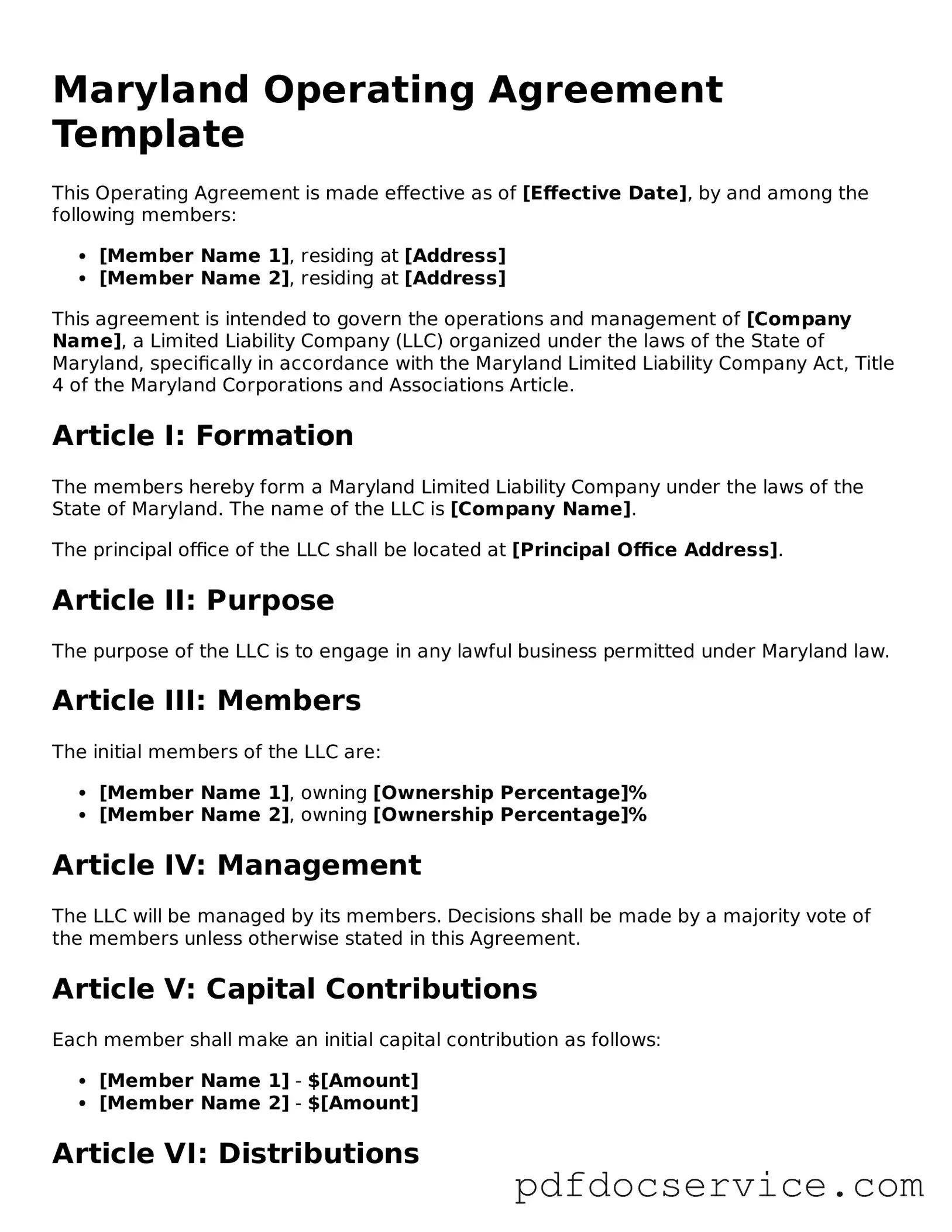Printable Operating Agreement Template for Maryland
The Maryland Operating Agreement form is a crucial document for Limited Liability Companies (LLCs) in the state. This form outlines the management structure, responsibilities, and operational procedures of the LLC, ensuring all members are on the same page. Having a well-crafted Operating Agreement helps protect the interests of the members and can prevent disputes down the line.
Open Operating Agreement Editor
